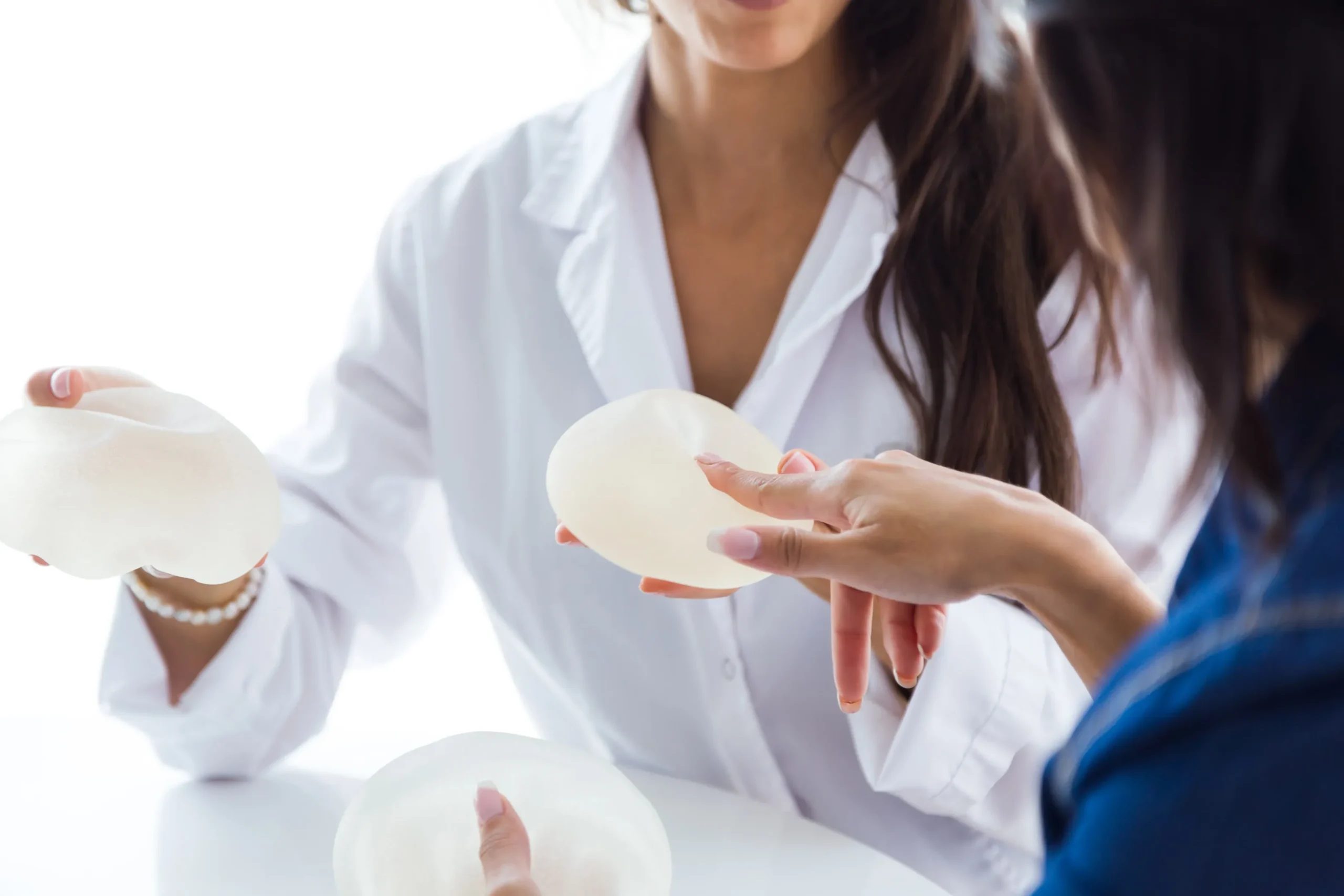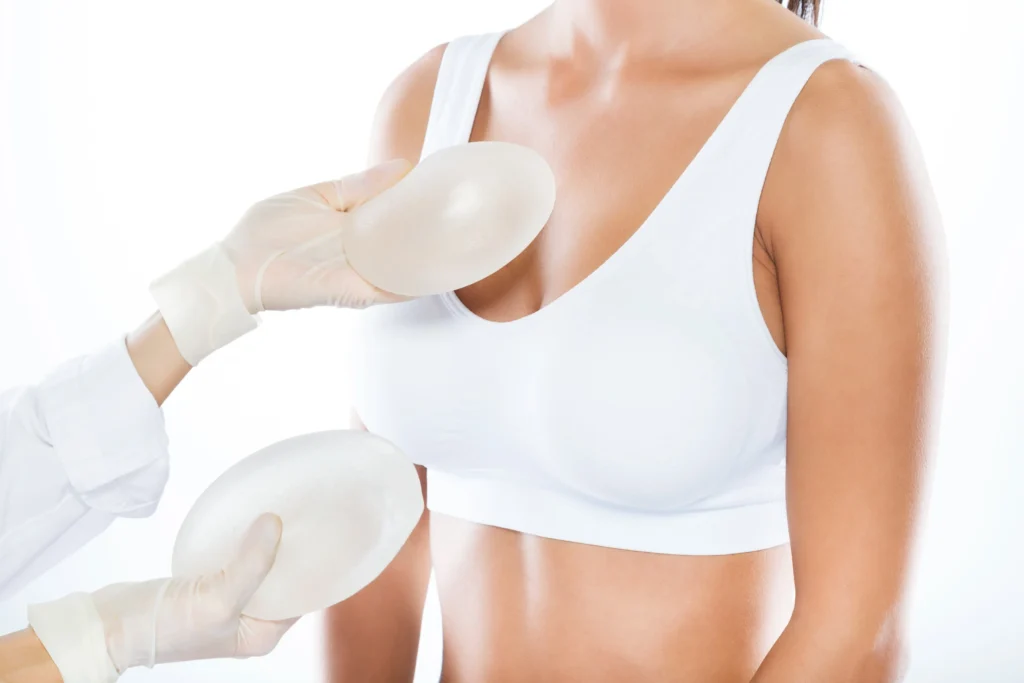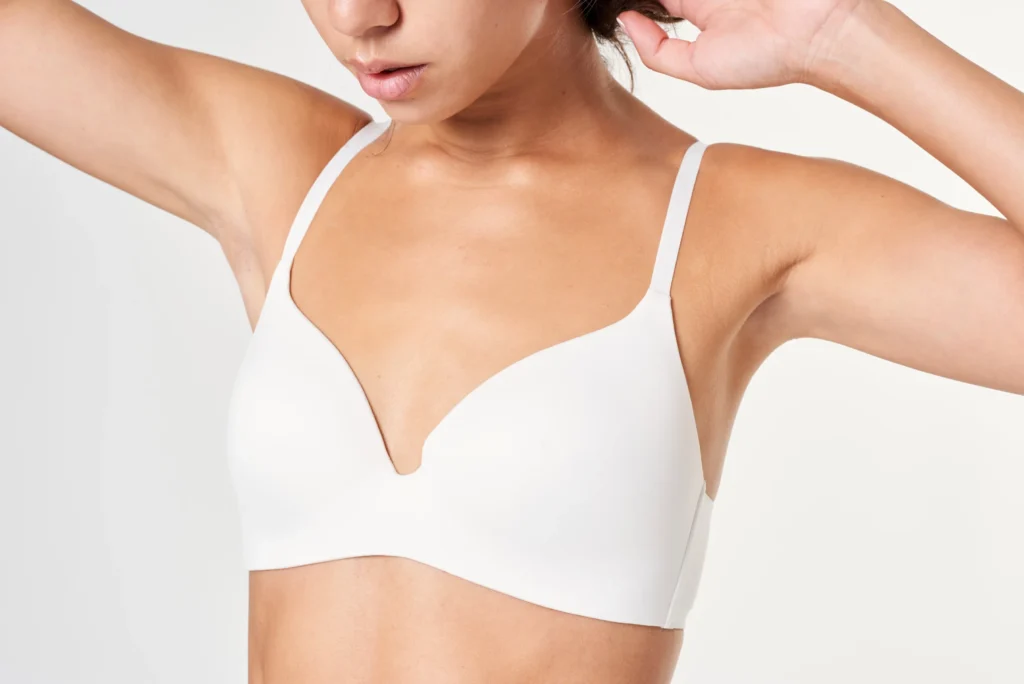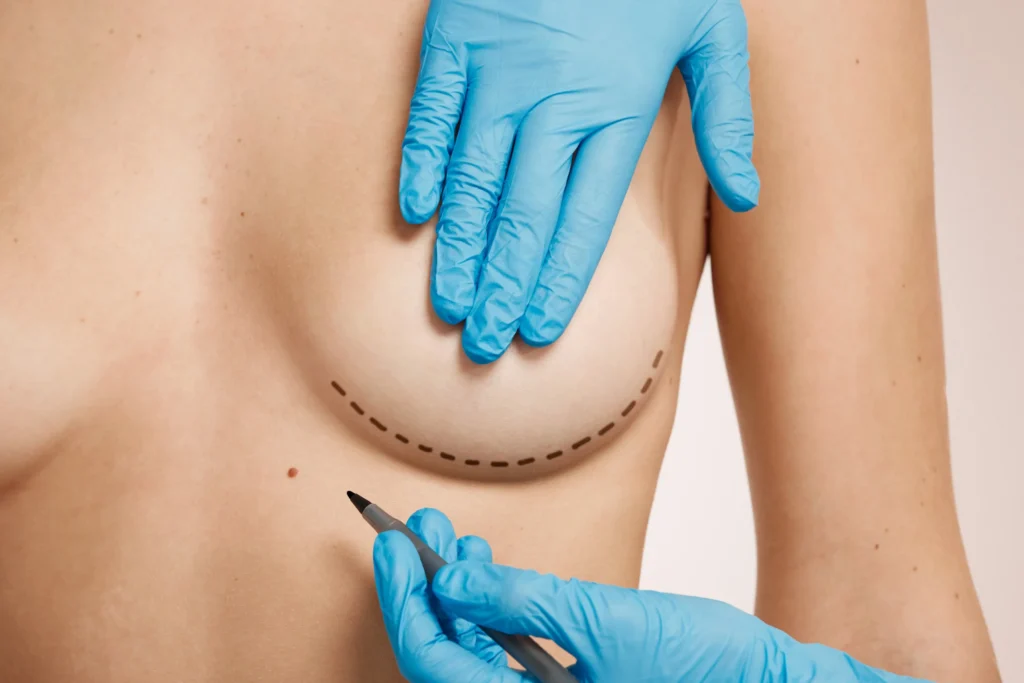Breast Implants: Saline vs Silicone – Pros, Cons, and Results
By Partington Plastic Surgery on April 17, 2024 in Uncategorized

Many breast augmentation patients report increased self-esteem and confidence. They usually feel more comfortable in their body, which may improve their outlook and self-satisfaction. The surgery can help women wear clothes they previously avoided. This procedure helps some women embrace their femininity and personality.
That’s why the popularity of breast augmentation is not surprising. This operation is a way to reach a more complete feeling of self in a society where body comfort is turning into one of the most current topics. For augmentation, saline vs silicone implants are often used.
Types of Breast Implants: What Are Your Options?
Implanted under the breast tissue or chest muscles, breast implants enhance or repair the breast. Two main varieties of implants are saline vs silicone implants.
Saline Implants
After insertion, saline implants are filled with sterile saltwater, making them customizable and easy to detect splits.
Silicone Implants
Pre-filled silicone implants include silicone gel that feels like breast tissue. Although they look more natural, rupture identification is more difficult, hence constant monitoring is essential.
The FDA sets minimum ages for saline and silicone implants at 18 and 22 years old, respectively.
Saline Implants: What Are They?
Saline implants have a silicone shell filled with sterilized seawater in the breast pocket. This allows volume modifications during surgery, making it a versatile breast augmentation option. Originally presented in the 1960s, their simplicity and efficiency continue to make them popular.
Pros of Saline Implants
- Adjustable Volume
- Surgeons can guarantee a customized fit by adjusting the size during the operation.
- Rupture Detection
- As the body absorbs saline, the bust is reduced, and leaks are immediately apparent.
- Cost-Effective
- Compared to silicone implants vs saline are more affordable.
- Age Flexibility
- Suitable for girls 18 and older, giving younger patients more options.
Cons of Saline Implants
- Less Natural Feel
- Might feel firmer than silicone breast tissue.
- Higher Risk of Rippling
- In women with less breast tissue, especially, there is more chance of obvious rippling or wrinkling.
- Aesthetic Limitations
- Possibly not as natural, especially in really thin women.
- Visible Scars
- Scarring may be more visible depending on the location.
Silicone Implants: What Are They?

The cohesive gel in silicone implants feels like human fat. Since their 1960s debut, they have evolved to include highly cohesive “gummy bear” gel for durability and natural appearance. These implants are pre-filled and have advanced to include highly cohesive gels that keep shape even if the shell splits. Silicone vs saline implants appear and feel more natural in contrast to the latter.
Pros of Silicone Implants
- Natural Look and Feel
- They seem soft like natural breast tissue.
- Reduced Rippling
- Less chance of rippling or wriggling, particularly helpful for women with little breast area.
- Cohesive Gel
- Gel stays in place during ruptures, limiting leaking.
- Ideal for a Fuller Appearance
- Silicone gel implants are ideal for those wanting fuller, rounder, or natural results.
- Variety of Shapes
- Available in several forms (round and anatomical) for more tailored aesthetic outcomes.
Cons of Silicone Implants
- Larger Incision Required
- The pre-filled ones require an increased incision for insertion.
- Higher Cost
- Usually more expensive owing to materials and manufacture.
- Silicone Leakage Complications
- The silicone gel is thick, hence when it breaks the breast’s shape does not change significantly. That makes it challenging to find a tear without periodic checkups.
- Older Age Requirement
- Due to many potential risks, these implants are not for under-22s.
Comparing Aesthetic Results: Silicone vs Saline Implants

Because of the nature of the gel, silicone implants often look more natural and seamless in terms of aesthetics. Saline implants may look rounder and less natural in women with little breast tissue. The final result depends heavily on body type, breast shape, and personal preferences. For instance, a woman with ample natural breast tissue might find both types satisfactory, while a thinner woman might prefer silicone for its more natural look.
Safety Considerations: Saline vs Silicone Implants
Safety characteristics of saline and silicone implants differ. Saline implants are safe because the body can absorb them if they rupture. While silicone implants feel more natural, silicone leaking can occur, requiring routine MRI scans to detect silent ruptures.
Capsular contracture and rupture rates are long-term concerns of breast augmentation surgery. FDA advises regular silicone implant monitoring.
Recovery and Maintenance
Recovery from both silicone vs saline implants involves similar steps, including managing swelling, downtime, and post-surgery care.
Recovery after Saline Implant Surgery
- Rest enough throughout recovery. Avoid vigorous activities and heavy lifting for 4-6 weeks.
- Take prescribed or nonprescription pain relievers.
- To evaluate healing and implant location, see your doctor regularly.
- Follow your doctor’s wound care instructions.
- Wear a supportive bra as instructed to decrease edema and support your new breast shape.
- Report infection, edema, or implant rupture to your doctor promptly.
Recovery Steps for Silicone Implant Surgery
- Rest adequately and avoid vigorous activities and lifting for at least 6 weeks, similar to saline implant recovery.
- Silicone breast implants vs saline managed pain and swelling with prescribed medications and by following your surgeon’s advice.
- Attend follow-up visits to guarantee recovery.
- MRI scans may be recommended to monitor implants and discover silent ruptures.
- To prevent scarring and infection, clean and care for incision sites as instructed.
- Wear a supportive bra for shape and comfort during recovery.
- Report any unexpected symptoms, such as discomfort, hardness, or breast changes, to your doctor.
Cost Comparison: Saline Implants vs Silicone

Surgeon, facility, and post-op costs are typical for saline implants. Complex silicone implants are more expensive.
Health insurance rarely covers cosmetic breast augmentations, but may fund mastectomy repair. Where medically necessary, health insurance may fund breast implant surgery. For example, breast reconstruction following mastectomy for cancer or congenital deformity correction. Patients must communicate with their insurance providers to confirm their coverage and comprehend the documentation needed for payment.
When comparing silicone vs saline implants cost, the latter are less expensive due to lower production costs and ease of installation.
To help potential patients understand the financial consequences of saline versus silicone breast implants, several studies have compared their costs.
These studies generally find that breast implants silicone vs saline cost more than saline implants due to various factors. For example, the cost of silicone gel material, the need for specialized surgical techniques, and more frequent follow-up and imaging requirements like MRI scans.
Silicone implants also require more operations for ruptures and capsular contractures, which raises their long-term costs.
Geographic location, surgeon expertise, and other medical factors affect expenses. Patients should carefully evaluate this research and talk with their doctor to make a financial and personal decision.
Saline Implants vs Silicone: How to Choose the Right Implant for You
Your tastes, finances, and aspirations as well as a few health factors will determine the implant you choose. Consulting with a board-certified plastic surgeon to discuss goals, lifestyle, and health is essential. You must weigh short-term desires and long-term effects to make the correct choice. Saline and silicone implants can produce natural-looking, pleasing results, but you must understand how they differ and select one that suits your goals and budget.
Final Thoughts on Silicone and Saline Implants: Making an Informed Choice
Breast augmentation with saline vs silicone implants depends on personal preferences and circumstances. Saline implants are good for ladies who want fewer incisions or cost savings. Silicone implants may be better for natural looks and feel. Find the implant that meets your needs and ambitions. To make the proper choice, talk to a plastic surgeon about the risks and benefits of each type. Be sure to consider upfront, long-term, and maintenance costs.
Our 24-hour recovery breast augmentation method is renowned for its fast post-surgery recovery. This procedure allows patients to resume daily activities faster than other methods due to less downtime. The 24-hour recovery breast augmentation procedure employs precise surgery and extensive planning to minimize tissue stress.
Whether you select saline implants vs silicone, regular check-ups, and problem monitoring are essential for optimal breast implant surgical results. Be careful of your body’s reaction post-surgery, take the right care, and follow up with your doctor for better results.
Return to Overview